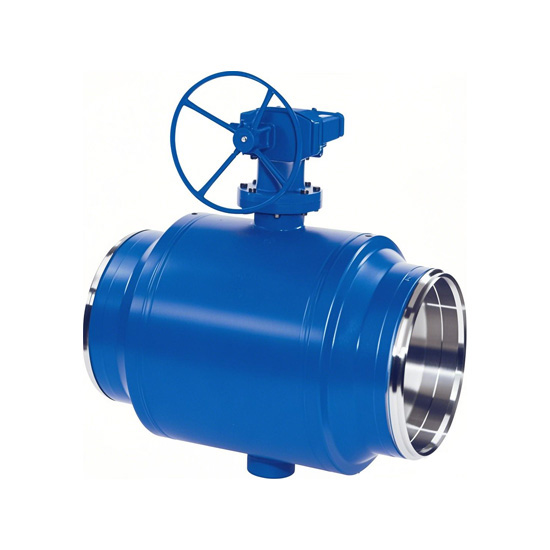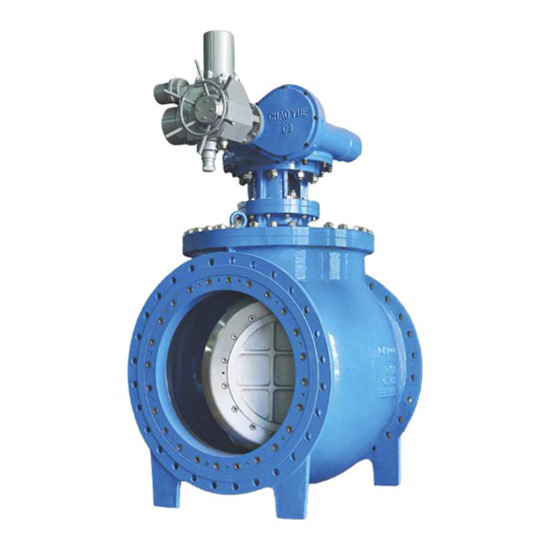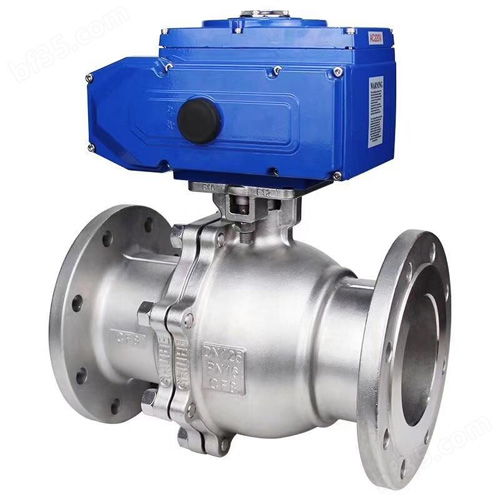1. Overview of Welded Ball Valves
1. Definition and Application
A fully welded ball valve is a type of ball valve where the valve body is connected to the pipeline by welding. It shuts off or allows the flow of media through the rotation of the ball. Its characteristics include:
Fully welded structure: The valve body is integrally formed by welding (no bolt connections), eliminating the risk of external leakage. It is particularly suitable for buried pipelines, high-pressure working conditions (such as long-distance natural gas pipelines and heating systems), and corrosive environments.
Sealing design: The valve seat uses high-performance sealing materials (such as reinforced PTFE, VITON, or metal seals). Combined with spring preloading or medium pressure self-sealing, it ensures bidirectional zero leakage and long service life.
Application scenarios: It is used in systems such as petroleum, natural gas, urban gas transmission and distribution, central heating, chemical industry, ships, and water treatment for media control in main pipelines or key nodes.
2. Explanation of Model Meaning
Take a common model as an example:
Q: Ball valve type;
3: Transmission method (worm gear drive)/6: Pneumatic/9: Electric/Handwheel direct drive (omitted);
6: Connection method (welded end);
7: Structural form (floating ball) or fixed ball (e.g., Q367F is a worm gear-driven floating fully welded ball valve);
F: Sealing surface material (PTFE / fluoroplastic).
Differences between floating ball and fixed ball:
Floating ball: The ball is pressed against the downstream valve seat by the medium pressure (suitable for DN≤200 or low-pressure systems);
Fixed ball: The ball is fixed by upper and lower bearings, and the valve seat is pushed by the medium pressure to achieve sealing (suitable for large-caliber DN≥300 or high-pressure systems).
2. Main Technical Parameters
1. Pressure Class
Nominal pressure (PN): PN16 (1.6MPa), PN25 (2.5MPa), PN40 (4.0MPa), Class 150~Class 2500 (ASME standard);
Strength test pressure: 1.5 times the nominal pressure (pressure holding for ≥15 minutes without leakage);
Sealing test pressure: 1.1 times the nominal pressure (pressure holding for ≥15 minutes without visible leakage).
2. Applicable Working Condition Range
Operating temperature:
PTFE valve seat: -29℃ ~ +180℃ (short-term ≤200℃);
Special modified materials (e.g., PEEK): -46℃ ~ +250℃ (high-temperature steam / cryogenic working conditions);
Applicable media: Water, steam, oil products, natural gas, liquefied gas, acid-base corrosive liquids (non-strong oxidizing acids);
Valve body / bonnet material: Carbon steel (WCB/A105), stainless steel (CF8/CF3M), low-temperature steel (LCB), or sulfur-resistant steel (NACE MR0175);
Ball / stem material: Stainless steel (304/316), hardened alloy steel, or hard chrome-plated surface, with wear resistance and corrosion resistance;
Valve seat assembly: Spring-loaded sealing structure (compensates for pressure fluctuations), with metal-backed fire-resistant design (meets API 607/BS 6755 fire resistance requirements).
3. Structural Dimensions
The diameter DN15~DN1200 corresponds to the connection dimensions of flanges (GB/T 9113/ASME B16.5) or welded ends (GB/T 12224/ASME B16.25). The structural length (L) complies with GB/T 12221 or API 6D standards.
3. Structure and Working Principle
1. Fully Welded Valve Body Design
Integral forging or steel plate welding: Eliminates external leakage points, improves strength and seismic resistance, and is suitable for buried or harsh environments;
Connection end structure:
Butt-welded end (BW): Welded directly to the pipeline (bevel processing is required, argon arc welding backing + multi-layer welding is recommended);
Flanged end (RF): Connected by flange bolts (a gasket is required to prevent leakage).
2. Ball and Valve Seat System
Floating ball: The ball is slightly displaced under the medium pressure and adheres to the downstream valve seat to form a single seal (efficient sealing for low pressure);
Fixed ball: The ball is fixed on bearings, and the valve seat is pushed by the medium pressure to achieve bidirectional sealing. Spring preloading compensates for wear;
Sealing mechanism:
Primary seal: Non-metallic materials such as PTFE/VITON elastically fit the ball;
Secondary metal seal: When non-metallic materials fail in case of fire, the metal ball and valve seat backing form a temporary seal to prevent leakage;
Anti-static design: Conductive springs or grounding devices are installed between the ball, stem, and valve body to discharge static electricity and avoid spark ignition of flammable media.
3. Operation Mechanism
The handwheel (or electric/pneumatic device) drives the stem to rotate, which in turn drives the ball to rotate 90°:
Clockwise rotation: The ball channel is perpendicular to the pipeline → Valve closed;
Counterclockwise rotation: The ball channel is coaxial with the pipeline → Valve open.
Opening and closing status indication: When the handle (or worm gear handwheel mark) is parallel to the pipeline, the valve is fully open; when it is perpendicular, the valve is fully closed.
4. Standards and Certifications
The design, manufacture, and testing of fully welded ball valves strictly comply with:
Structural standards: GB/T 12237 (Steel Ball Valves), API 6D (Pipeline Transportation Systems for Petroleum and Natural Gas), ASME B16.34 (Valves - Flanged, Threaded, and Welding End);
Test standards: GB/T 13927 (General Valve - Pressure Test), JB/T 9092 (Soft Sealed Ball Valves - Reliability Test), API 598 (Valve Inspection and Testing);
Connection standards: GB/T 12221 (Valves - Face-to-Face and Center-to-Face Dimensions), ASME B16.25 (Butt-Welding Ends);
Safety certifications: API 607/6FA (Fire Test for Soft-Seated Quarter-Turn Valves), EN 1797-1 (Valves for Oxygen - Part 1: Requirements and Tests), ISO 15156 (Petroleum and Natural Gas Industries - Materials for Use in H2S-Containing Environments in Oil and Gas Production).
Hot Tags: Fully Welded Ball Valve / Electric Full Welded Ball Valve / Pneumatic Full Welded Ball Valve / Turbine Full Welded Ball Valve /




